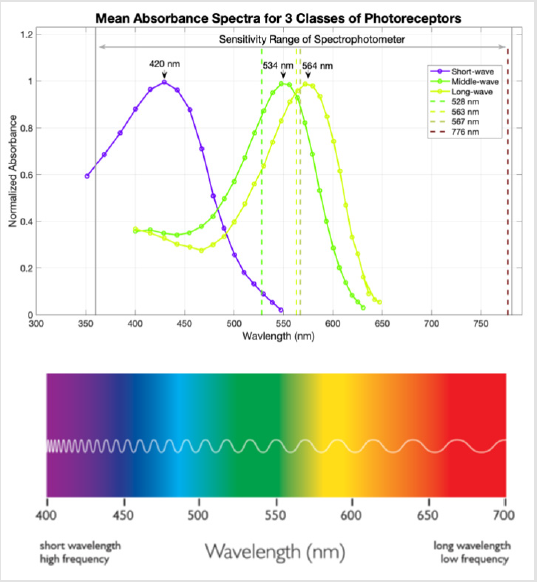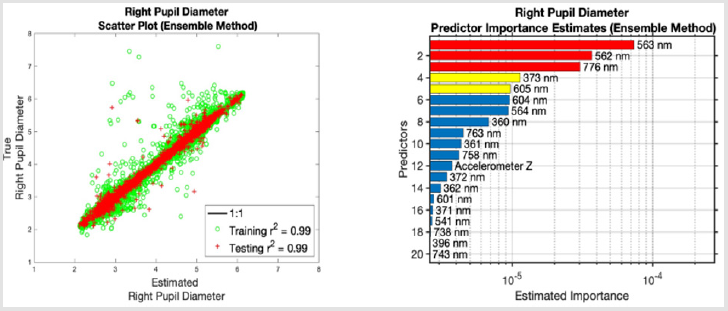Modeling Autonomic Pupillary Responses from External Stimuli Using Machine Learning
The human body exhibits a variety of autonomic responses. For example, changing light intensity provokes a change in the pupil dilation. In the past, formulae for pupil size based on luminance have been derived using traditional empirical approaches. In this paper, we present a different approach to a similar task by using machine learning to examine the multivariate non-linear autonomic response of pupil dilation as a function of a comprehensive suite of more than four hundred environmental parameters leading to the provision of quantitative empirical models. The objectively optimized empirical machine learning models use a multivariate non-linear non-parametric supervised regression algorithm employing an ensemble of regression trees which receive input data from both spectral and biometric data. The models for predicting the participant’s pupil diameters from the input data had a fidelity of at least 96.9% for both the training and independent validation data sets. The most important inputs were the light levels (irradiance) of the wavelengths near 562 nm. This coincides with the peak sensitivity of the long-wave photosensitive cones in the retina, which exhibit a maximum absorbance around max λ = 562.8 ± 4.7 nm.
DOI: 10.26717/BJSTR.2019.20.003446

